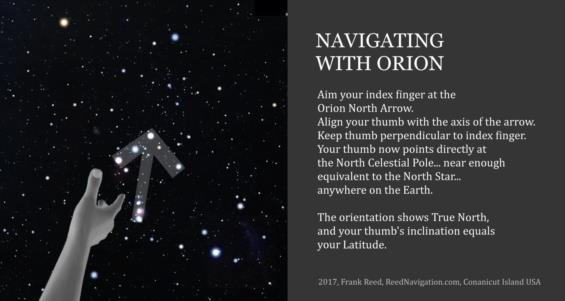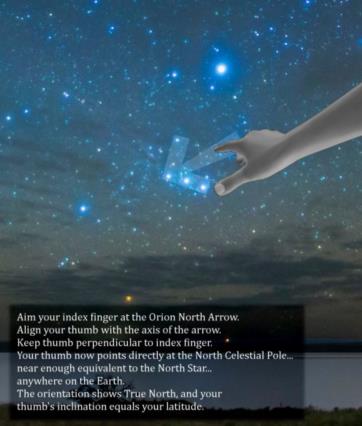
NavList:
A Community Devoted to the Preservation and Practice of Celestial Navigation and Other Methods of Traditional Wayfinding
From: Frank Reed
Date: 2018 Oct 8, 17:03 -0700
Here we see a mountain fortress at night. The lights are shining from a few rooms (or not). And the stars behind the tower tell us a great deal about our location. You should be able to spot the Pleiades rather quickly, and that should lead you to Orion. Once you recognize Orion, you should be able to estimate roughly what your latitude is, and you should also be able to estimate the compass direction toward which the photographer is facing. The image, incidentally, is a screen cap from a BBC documentary. An astronomy (non-celestial navigation) friend in the UK sent it to me.
How can you estimate directions and latitude using Orion? Aha. That's the Orion North Arrow again! It's really very handy, but you may have forgotten over the northern hemisphere summer. As Orion returns to late night and then evening skies, you can use it anywhere on Earth to get a moderately good estimate of your latitude and also to get a good estimate of compass direction. Works great. Learn it and use it.
Note that in this photo you only get a rough estimate of the latitude. The Orion North Arrow works well with the real sky, but the two-dimensional nature of photos limits its usefulness except when Orion is just rising or just setting (and it's "well up" in this photo).
Frank Reed









